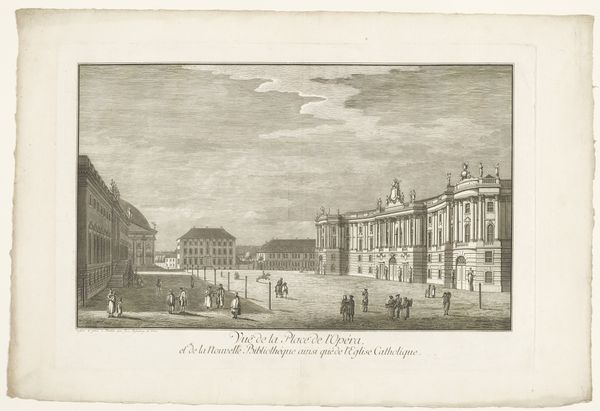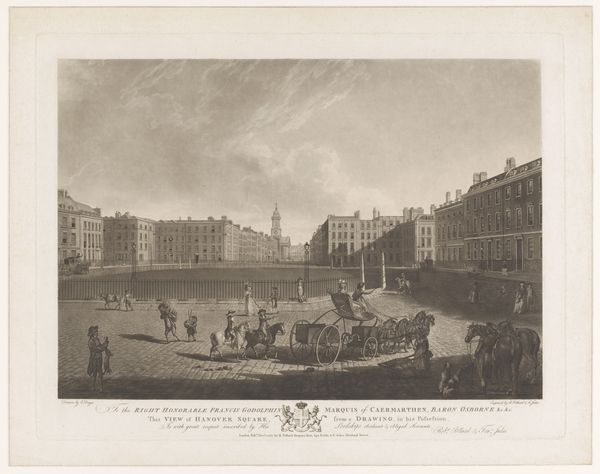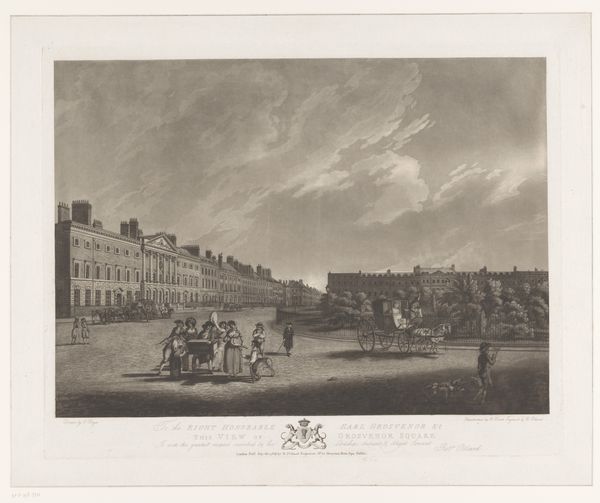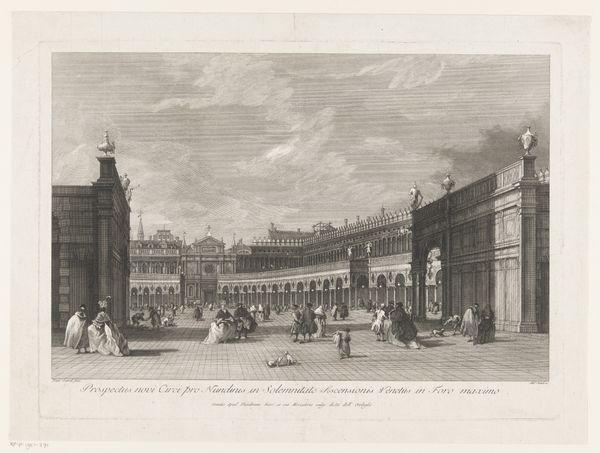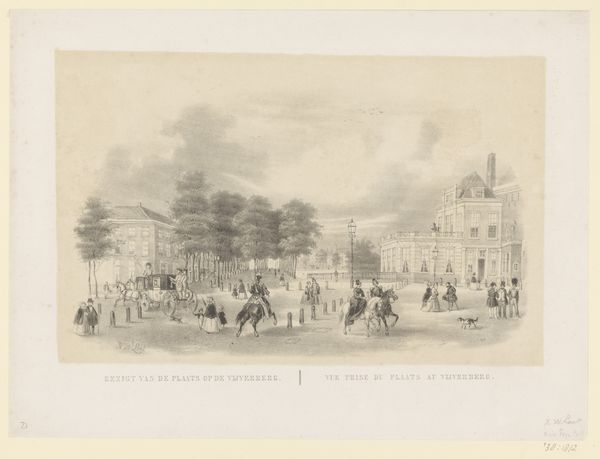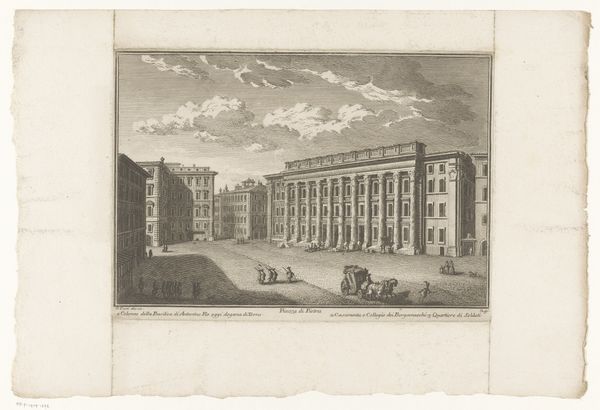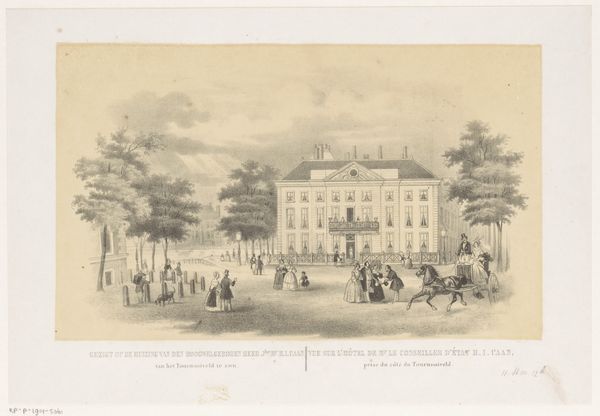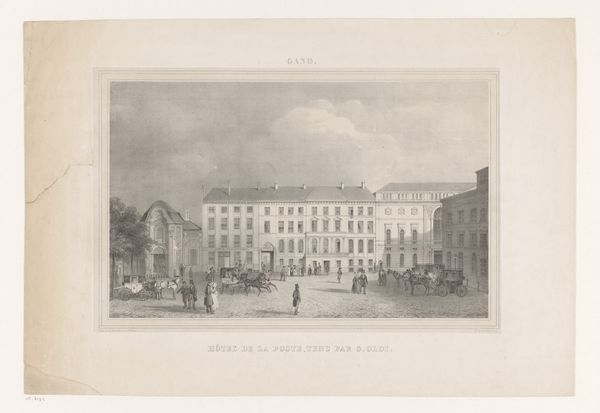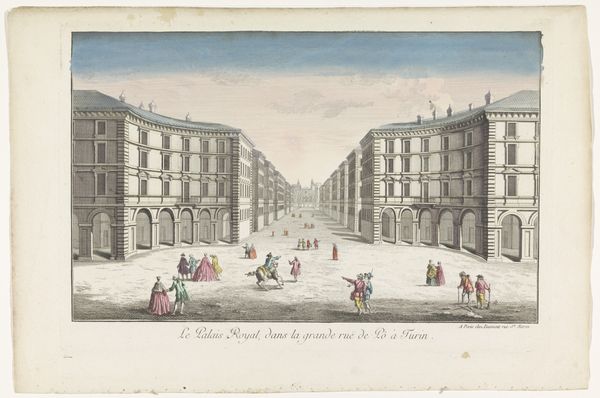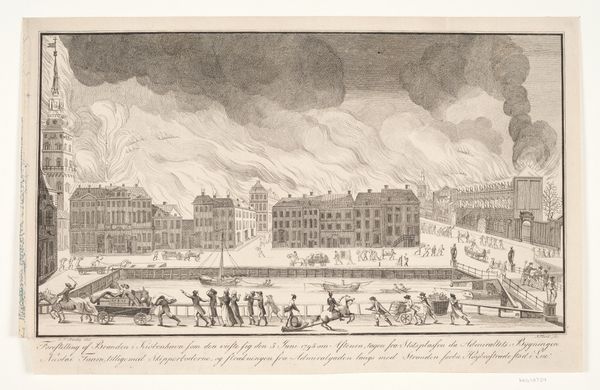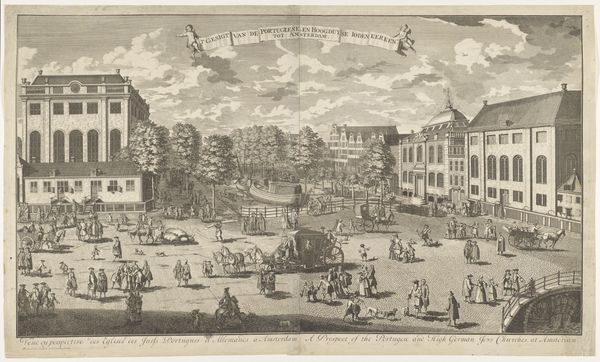
print, engraving
#
neoclacissism
# print
#
old engraving style
#
landscape
#
15_18th-century
#
cityscape
#
genre-painting
#
engraving
Dimensions: height 442 mm, width 582 mm
Copyright: Rijks Museum: Open Domain
Editor: So this print, "View of Bloomsbury Square" by Robert Pollard from 1787… it's a bustling London scene, but something about the way the light falls gives it a kind of serene formality. What details jump out at you when you look at this piece? Curator: It’s the careful ordering that draws my eye. Look at the buildings – echoes of Roman facades, designed to evoke authority and civic virtue. Then consider the figures. Notice how their poses, their clothing, their very presence speaks of status and social role, carefully performed. Even the cows seem staged! Do you see how this controlled environment might reflect anxieties about social order? Editor: Anxieties? I mostly see affluence. The architecture, the carriages… Curator: But who controls the narrative here? The Duke of Bedford is directly addressed. He essentially owns this image of Bloomsbury Square through patronage, reflecting a societal structure where power dictates even visual representation. Notice how nature – the trees, the open square – is meticulously framed and contained within the ordered grid of the city. Is this a celebration of progress, or a subtle form of control? Editor: I hadn't thought about the Duke's role in shaping how we see the square. It makes me question whose perspective we're really getting. Curator: Exactly! The engraving then becomes a fascinating record, less about the literal depiction of a place and more about the underlying power dynamics at play. Think of it as a visual contract, solidifying social hierarchies through art. Editor: That gives me a lot to think about. It's more than just a pretty picture; it's a document of its time. Curator: Indeed. Each symbol, carefully etched, invites us to decipher the values and anxieties of 18th-century society.
Comments
No comments
Be the first to comment and join the conversation on the ultimate creative platform.
